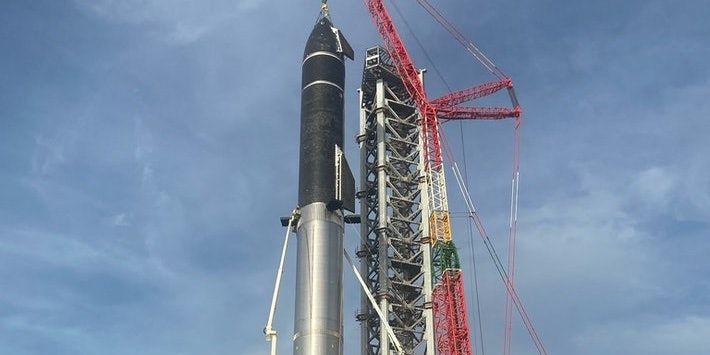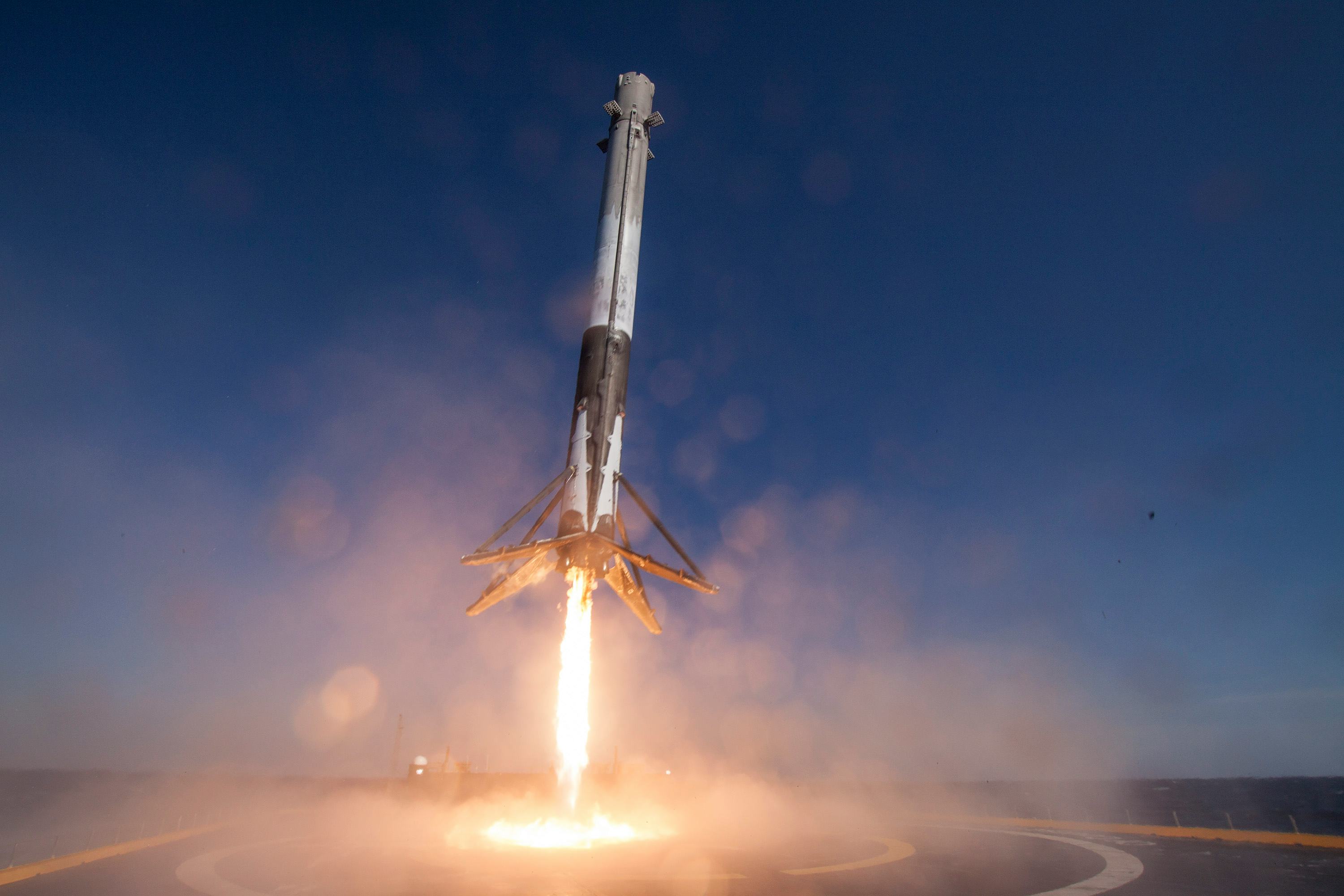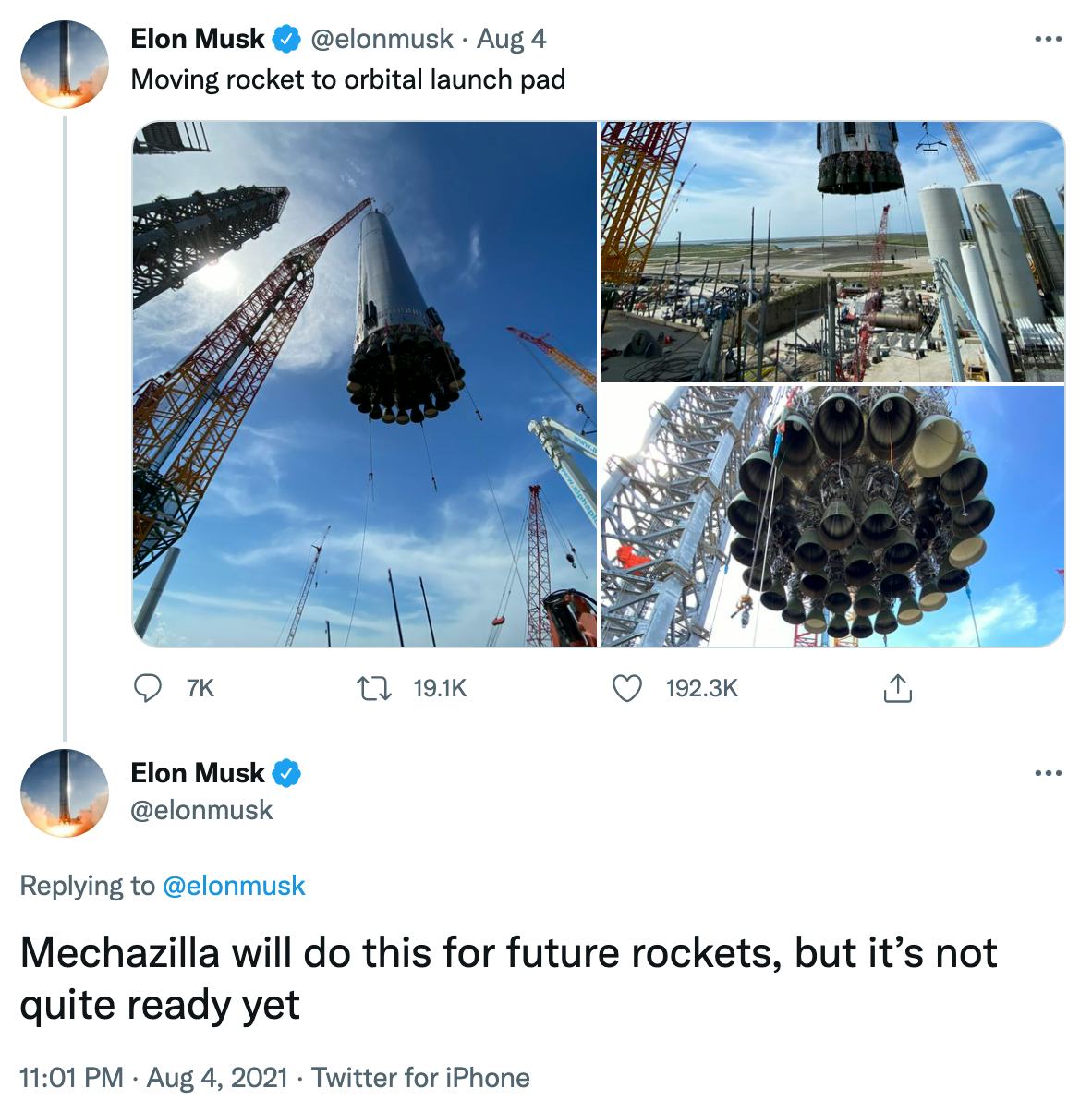
SpaceX is about to use some “robot chopsticks” on its new Starship rocket.
This month, CEO Elon Musk detailed how the new Mechazilla orbital grabbing arm will help the Starship rocket. The goal is to catch the ship and its Super Heavy booster as they return to Earth. The technique could be an upgrade over the droneships currently used for Falcon 9 boosters returning to Earth after missions.
That could help the firm achieve its most ambitious targets, like launching the same Starship three times per day. That, in turn, means it has a chance of achieving its goal of a city on Mars by 2050.
“SpaceX will try to catch largest ever flying object with robot chopsticks,” Musk posted on his Twitter page on August 30. “Success is not guaranteed, but excitement is!
It’s one of the most ambitious features of a spaceflight project already breaking new ground. The Starship is a fully-reusable rocket capable of sending over 100 tons or 100 people into space at a time. The ship is designed to support all of SpaceX’s current missions while also paving the way for more ambitious plans like a base on the Moon or a city on Mars.
The under-development vessel could become the tallest (394 feet) and most powerful rocket (16 million pounds of liftoff thrust) ever to fly. While it’s already set to be an impressive visual sight, Mechazilla could make the scene look even more outstanding.
Want to find out more about SpaceX and Starship? Subscribe to MUSK READS+ for exclusive interviews and analysis about spaceflight, electric cars, and more.
SpaceX Mechazilla: why is it named that?
Mechazilla is the name Musk has given to the launch tower next to the Starship launchpad. The pad is located at the firm’s Starbase facility in Texas, where it aims to host the rocket’s first-ever orbital flight later this year.
In April 2021, Musk explained on Twitter that, if it had some legs, it would resemble “Mechazilla.” This is most likely a reference to the Mechagodzilla character from the Godzilla movie franchise, which first appeared in the 1974 film Godzilla vs. Mechagodzilla:
Musk, of course, is well-known for including references to science fiction in his company’s products.
SpaceX Mechazilla: what does it do?
Launch towers for rockets are nothing new. NASA explains that the Fixed Service Structure at the Kennedy Space Center’s Launch Pad 39A — used for rockets like the SpaceX Falcon 9 and NASA’s space shuttle — measures around 347 feet from the ground to the top of the lightning mast. It features three swing arms for access to a shuttle placed on the pad. It’s ideal for emergency exits for astronauts.
But SpaceX is thinking bigger with the Mechazilla. In December 2020, Musk claimed that the firm planned to use the launch tower’s arms to catch the Super Heavy booster as it returns to Earth.
Some Musk fans have already created animations of their interpretations of how it might work:
Musk gave further details about how it would work on August 30:
- The booster will likely use two pins for lifting and catching. Musk noted that “maybe it’s better to modify grid fins to take more load,” suggesting the plans are still in motion.
- The ship would sport “something” to flip out from the leeward side of the ship. Musk added that it’s “maybe it’s part of [forward] flaps, but prob[ably] not.”
- Tank treads on the arms will “slide” the booster out to line up with the orbital launch pad, ready to fly again.
The plan marks a sharp departure from SpaceX’s other rocket reuse efforts. For the semi-reusable Falcon 9, the first-stage booster either returns to Earth on a land-based launchpad or an autonomous droneship in the sea. The rocket fires its engines during descent to come to a stop on the pad.
So why not do that then? Because, as Musk suggested on August 13, using the tower to catch the booster and ship means that neither of them needs landing legs to support themselves as they return. The Starship will only require legs for missions that land on Mars or other planets “until there is local infrastructure.”
Note that the Falcon 9 boosters used their legs to support themselves as they came in to land on those droneships.

On August 4, Musk also suggested that the tower could move the rocket into position.

If the tower can catch the rocket and move it back into position onto the launch pad, that could help SpaceX reuse rockets faster than ever. The fastest turnaround time for a Falcon 9 booster from the previous flight to re-flight is 27 days. In March 2020, Musk said that he wanted Starship to be able to fly three times per day.
If Musk wants to build a city on Mars by 2050, he might come to depend on that rapid turnaround time. In 2019 he estimated that the city would require around one million tons of cargo to reach self-sufficient status. If each ship carries 100 tons, that means SpaceX will need to make 10,000 flights over the next 30 years — or around 333 per year.
The race is on.
SpaceX Mechazilla: when will it be used for the first time?
Possibly soon. On August 30, Musk claimed it could be used with the fifth booster. As this year’s orbital flight will likely use the fourth booster, Mechazilla could debut sooner rather than later.
SPACEX STARSHIP ORBITAL FLIGHT: HOW DID WE GET HERE?
- November 2018 — BFR, first announced in September 2017, gets renamed Starship
- December 2018 — Musk confirms the new ship has switched to stainless steel
- January 2019 — Shortened “Starhopper” prototype unveiled, and Musk explains the switch to steel
- February 2019 — Raptor engine beats a long-standing rocket record
- April 2019 — Starhopper completes a tethered “hop”
- July 2019 — Starhopper launches 20 meters (67 feet)
- August 2019 — Starhopper launches 150 meters (500 feet)
- September 2019 — Starship Mk.1 full-size prototype unveiled
- May 2020 — Starship SN4 full-size prototype completes a static test fire
- August 2020 — SN5 launches 150 meters (500 feet)
- October 2020 — SN8 completes the first triple-Raptor static fire
- December 2020 — SN8 launches 12.5 kilometers (41,000 feet) and crashes into the ground
- February 2021 — SN9 launches 10 kilometers (33,000 feet) and crashes into the ground
- March 2021 — SN10 launches 10 kilometers (33,000 feet), lands, and explodes eight minutes later. That same month, SN11 launches 10 kilometers (33,000 feet) and hits the ground in several pieces.
- May 2021 — SN15 launches 10 kilometers (33,000 feet) and lands without a hitch, except for a small fire at the base
SUBSCRIBE TO MUSK READS+, A PREMIUM NEWSLETTER THAT COVERS THE WORLDS OF ELON MUSK, SPACEX, TESLA, AND EVERYTHING BETWEEN.







